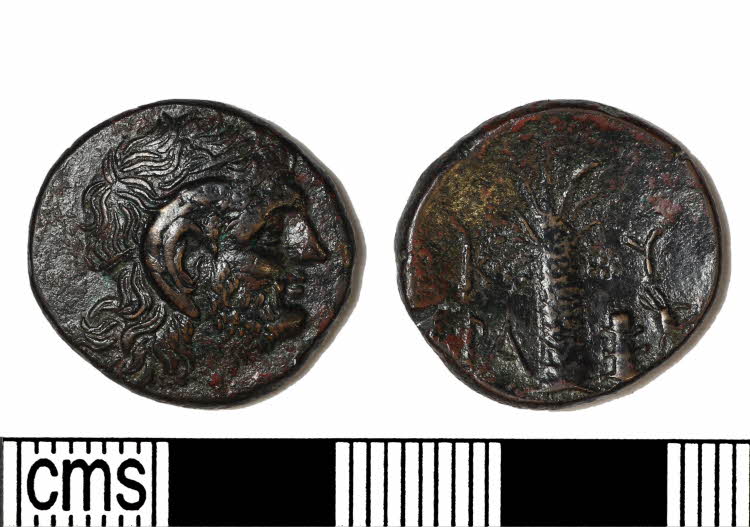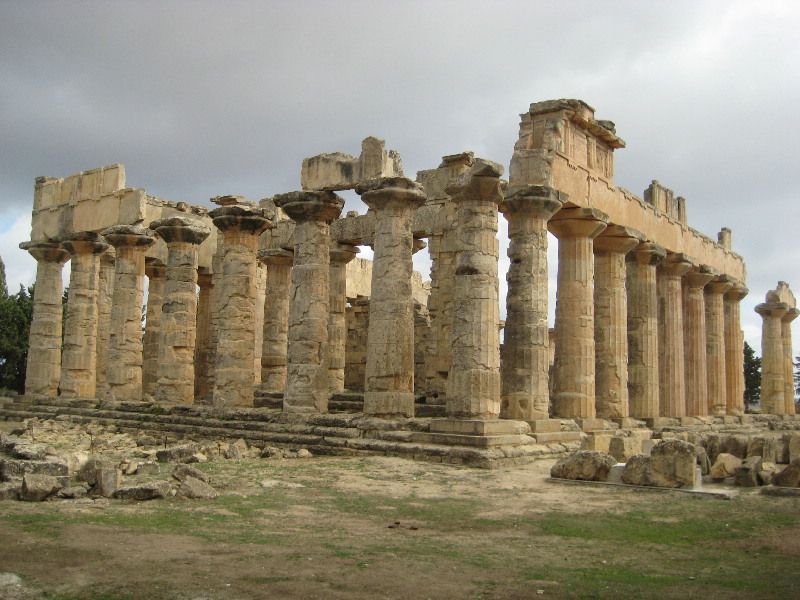Temple of Zeus at Cyrene, Libya
Archaeological Development
The city of Cyrene is a very large site, spread over 3 different areas, the Sanctuary of Apollo, the main agora area and the Temple of Zeus.
The Temple of Zeus was built around the 6th century BC; rebuilt by the Romans in the 2nd century AD after the Jewish Revolt in 115 AD where it was destroyed, and destroyed again after an Earthquake in the 4th century AD, this time the site was abandoned.
The temple of Zeus was built in the Doric style, with two rows of 17 X 8 Doric columns and was very large, measuring, 70 X 32 meters (larger than the Parthenon in Athens)[1]. Stonework on the temple shows evidence of Egyptian Workmanship. When it was repaired after the Jewish Revolt the temple waas given a new marble frontage and a high podium in the traditional Roman style[2].
Gods/Heroes
There is some contrasting evidence about who this site was dedicated too, whilst there is agreement that it was to honour Zeus, some have argued that the temple served as a Greek/Libyan hybrid, Zeus Ammon [3], this can be seen from the numerous coins found bearing the head of Zeus Ammon. Under Roman rule it was used to worship Jupiter.
Ritual Activity
Sacrifice-
Animal sacrifices were carried out within the temple.
Dedications-
Festivals-
Other-
Rules and Regulations
There is no evidence about any rules about the site.
Other Activities
There is no evidence about any other activities in the site.
Historical Significance
The city was named after the spring Kyre, which the Greeks dedicated to Apollo (Pindar tells the story of how Apollo took Cyrene from Northern Greece to Libya and had a child with her)[4]. Herodotus. The city of Cyrene was founded by colonists from Thera, led by Battus in 630 BC [5]. During the Persian War they became part of the Sixth Province of the Persian kingdom [6]. It then became one of the principle cities in the Hellenistic World, this can be seen within the city from all the monuments, temples, shrines and theatres built. Cyrene was transformed into a Roman province during 74 BC and was Romanised. During the Jewish Revolt in 115 AD the temple was destroyed (along with most of the agora and the other sanctuaries of Demeter & Core and Apollo.), it was rebuilt by the end of the 2nd century AD by the emperors Hadrian, Marcus Aurelius and Commodus. Hadrian was named as Cyrene's second founder for all the work he did to repair the city [7]. The temple was destroyed and abandoned in 365 AD after an earthquake [8]. Italian archaeologists started to restore the temple in 1957, adding some fluting to the columns, this work stopped in 1974 [9]. The site became a UNESCO world heritage site in 1982, and in 2016 it was placed onto the 'List of World Heritage in Danger' [10].
Who used the site, and where did they come from?
The city of Cyrene was founded by colonists from Thera, led by Battus in 630 BC.
Select Site Bibliography
Primary Sources:
Herodotus, Histories, trans. Tom Holland, Penguin, 2013
Pindar, Pythian 9, trans. William H. Race, Loeb, 1997
Secondary Sources:
http://whc.unesco.org/en/list/190
http://northern-greece.com/zeus-ammon-kassandra/
http://m.megalithic.co.uk/article.php?sid=22286
http://temehu.com/cities_sites/cyrene-cyrenaica.htm
Kearns, E., Ancient Greek Religion; A Sourcebook, Wiley-Blackwell, 2010
Scott, M., Space and Society in the Greek and Roman Worlds, Cambridge University Press, 2013
Footnotes
1- http://whc.unesco.org/en/list/190
2- Scott, M., p39
3-http://northern-greece.com/zeus-ammon-kassandra/
4- Pindar, Pythian 9
5- Herodotus, 4.150-158
6- Herodotus, 3.91
7- Scott, M., p37
8- http://whc.unesco.org/en/list/190
9- http://m.megalithic.co.uk/article.php?sid=22286
10- http://whc.unesco.org/en/list/190
Location
This Temple of Zeus is based on the North Eastern hill of the Ancient City of Cyrene. The land around Cyrene is the highest in all the regions in Lybia and is very fertile and lush, producing a good harvest [Herodotus 4.199].
Site Plan

Objects From Cyrene

Minted in Cyrene.
Copper alloy coin. 4thC BC(late)-3rdC BC(early)
(obverse) Head of Zeus Ammon, right.
(reverse) Palm tree; to right, silphium and crab.

